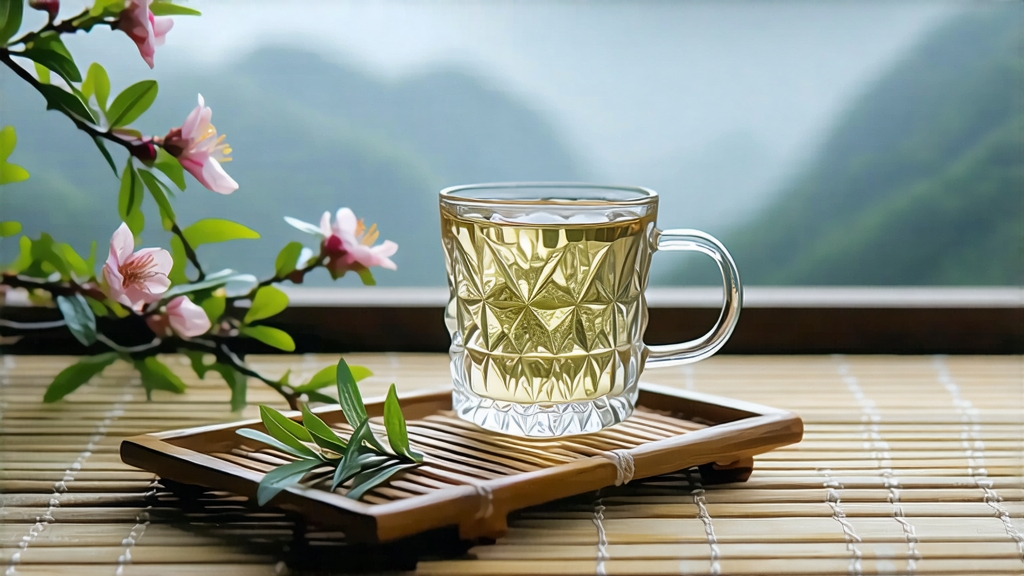
Among the six great families of Chinese tea, white tea is the most quietly spoken, yet its hushed tones carry centuries of lore. Within that family, Bai Hao Yin Zhen—literally “White Hair Silver Needle”—is the uncrowned prince: a tea made only from single buds, silvery with down, plucked for only a few spring days each year. To understand China’s tea imagination, one must listen to the story these buds tell.
Historical whispers
The first recognisable white tea appeared during the Song dynasty (960-1279), when imperial tribute lists mention “white cakes” pressed from down-covered buds. The loose, unpressed Silver Needle we know today, however, took shape in the 1790s in northern Fujian, when the Qing court still demanded the finest buds as tribute. Legends say the tea was once weighed against silver, ounce for ounce, giving rise to the name. Foreign merchants tasting it in the port of Fuzhou in the 1890s nicknamed it “China White,” and so the West met the East in the shimmer of a single bud.
Terroir and micro-seasons
Authentic Silver Needle comes from two tiny counties on Fujian’s coast: Fuding and Zhenghe. The region’s red, sandy loam is rich in quartz and iron; the subtropical maritime air brings morning fog that filters sunlight and slows photosynthesis, concentrating amino acids that later translate into sweetness. The picking window opens when the spring thermometer hovers between 15 °C and 20 °C and the buds are still closed like tiny spears, usually from mid-March to early April. One kilogram of finished tea needs roughly 30 000 buds, all picked before ten in the morning while dew still glistens.
Crafting silence: two steps and a breath
White tea’s minimalism is often misunderstood as “non-processing.” In reality, the craft lies in guiding the leaf through time and air without ever bending it to fire.
- Outdoor withering: the buds are spread two centimetres deep on bamboo trays set on racks in open-walled sheds. For thirty-six hours they breathe with the mountain breeze, losing moisture while enzymatic reactions generate floral precursors. Masters “read the wind,” turning the buds every hour and shifting trays to follow the sun’s arc.
- Indoor withering: at dusk the buds are moved to a warmer room where they rest in stillness for another twelve hours, allowing the cell walls to re-absorb aromatic compounds.
- Selective firing: only if the weather refuses to cooperate will a charcoal basket, covered with fine ash, provide a gentle 30 °C draft for ninety minutes. The goal is not to dry completely but to “fix the soul,” arresting oxidation while preserving the bud’s living white down.
Grades and garden styles
Although Silver Needle is itself a grade above White Peony and Tribute Eyebrow, connoisseurs still distinguish two lineages:
- Fuding style: buds plump and straight, dense trichomes, pale apricot liquor, pronounced “cooling” sweetness.
- Zhenghe style: buds slightly slimmer, longer withering gives deeper hay and dried-longan notes, darker cup.
Within each county, micro-gardens separated by a single hill can show different aromatics—an echo of Burgundy’s climats.
Chemistry in the cup
Silver Needle is prized for its high theanine content (often above 2.5 %), which blankets the palate with brothy sweetness. Oxidation remains below 5 %, so catechins stay lively, offering a fresh, cucumber-like briskness. A slow, cool drying phase encourages the formation of cis-3-hexenyl hexanoate, the compound that gives the tea its signature honeydew note. Because buds contain no mature leaf, caffeine concentrates in the tip; yet the high amino acid ratio smooths any edginess, creating a paradoxical calm alertness.
Water, leaf, and time: brewing as meditation
Western writers often treat white tea as delicate, but Silver Needle is surprisingly resilient; its downy coat protects the bud and releases flavour gradually. The aim is to coax rather than extract.
Gaiwan ceremony (recommended)
- Leaf: 4 g (about two heaped teaspoons)
- Vessel: 120 ml porcelain gaiwan
- Water: spring